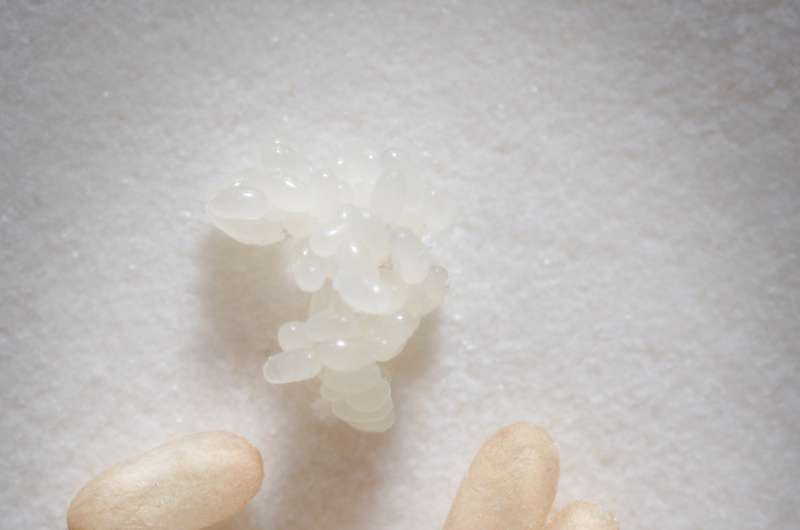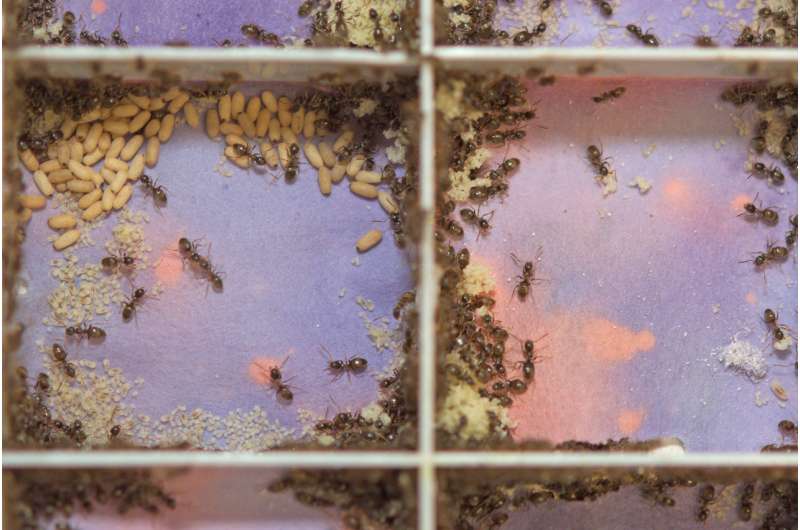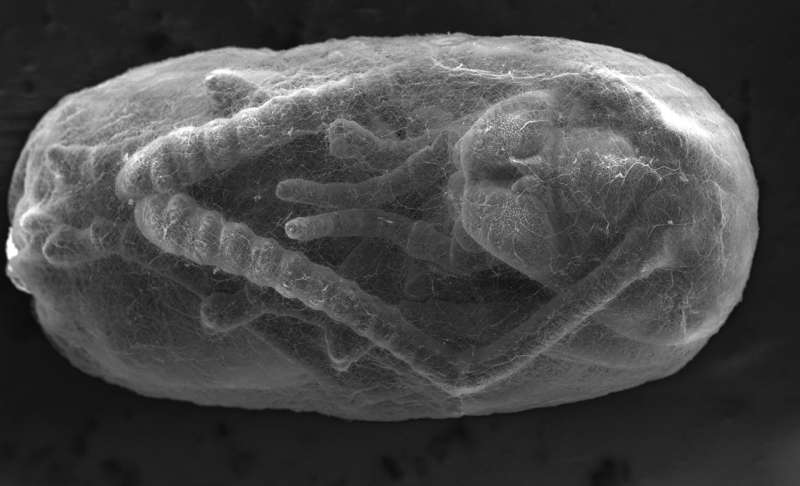Cleaning, but safely! Cocoons protect sensitive ant brood during toxic disinfection

Ants are tidy—when they move into a new nest box, they spend the first days cleaning it thoroughly, just like humans moving into a new home. Many ants produce highly acidic chemicals from specialized glands in their body. Researchers have assumed that ants only spray this poison, which is made mostly of formic acid, to fight other ants and would-be predators. But in two studies published in 2013 and 2018, Sylvia Cremer and her team showed that ants use acidic chemicals to disinfect nest mates contaminated and infected with pathogens.
In a new study published in Current Biology, Sylvia Cremer's research team shows that Lasius neglectus ants also spray their nests prophylactically with their acidic poison, likely ensuring that the nest is clean for first-time occupancy. But given that the poison doubles as a chemical weapon, its use within the nest raises further questions. Cremer says, "How can ants spray this aggressive acid in their nest, exposing their sensitive brood to the acidic fog?" While adult ants are protected from the poison by a thick skin (the cuticle) and eggs by a protective "shell" (the corion), the cuticle of the pupae is thin and fragile, and highly susceptible to damage. However, pupae of the Lasius neglectus species are also covered in a silk cocoon, which Pull and colleagues hypothesized may offer them protection.
Through a series of experiments, the research team searched for the answer. First, they removed the protective silk cocoon from some pupae and found that they survived just as well exposed as wrapped pupae. But when they placed nude pupae and worker ants into a nest together, more nude pupae died than cocooned pupae. Is the increased death a result of the acidic poison?
To find out, the researchers glued shut the poison glands of the worker ants with super-glue. "We created a 'functional knock-out' ant by creating animals that could not spray formic acid," explains Cremer. In a nest with ants unable to spray acid, both nude and wrapped pupae had the same chance of survival. "So it is the formic acid that kills nude pupae, but pupae in a cocoon are protected from it," Cremer concludes. "When we use harmful cleaning products, we protect ourselves with gloves. The cocoon has a similar function to protective gloves."

The current study provides the first example at colony level of so-called immunopathology, a phenomenon also known from the human immune system. The immune system often fights pathogens with toxic substances, but at the same time, it must limit damage to its own body cells. The immune system, therefore, faces the challenge of fighting pathogens as aggressively as possible while protecting the body's own cells and organs from collateral damage. The same happens in ants on the colony level—they protect the most sensitive parts of their colony from the harmful side effects of cleaning with a caustic poison.
The study could also explain why some species of ants have lost the original cocoon and other species have kept it, explains Christopher Pull: "Constructing a cocoon is costly for ants. For example, it may mean a longer development time for the pupae. Why some species of ants have a cocoon whereas others have lost it is still unclear. Here, we show that the cocoon protects ants in a sensitive phase of their development. It remains to be seen whether species of ants without cocoon clean their nests with less aggressive chemicals."

More information: Christopher D. Pull et al, Protection against the lethal side effects of social immunity in ants, Current Biology (2018). DOI: 10.1016/j.cub.2018.08.063
Journal information: Current Biology
Provided by Institute of Science and Technology Austria




















